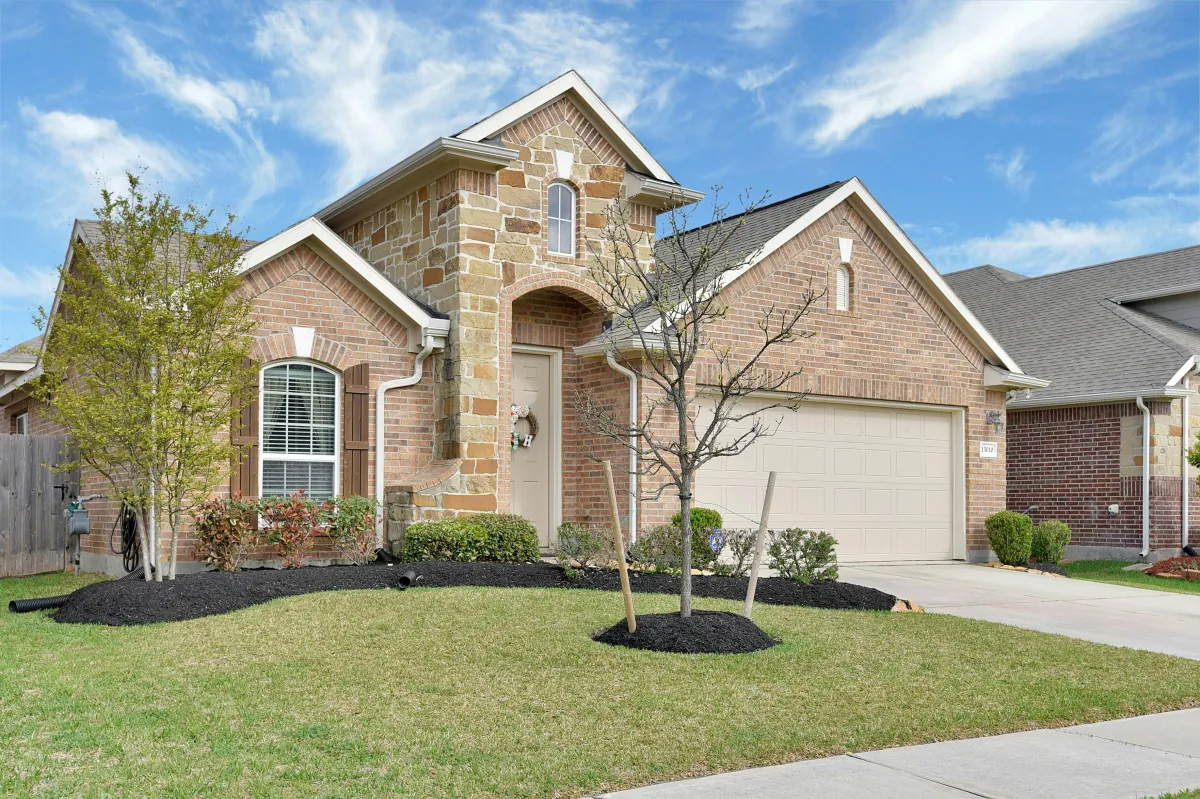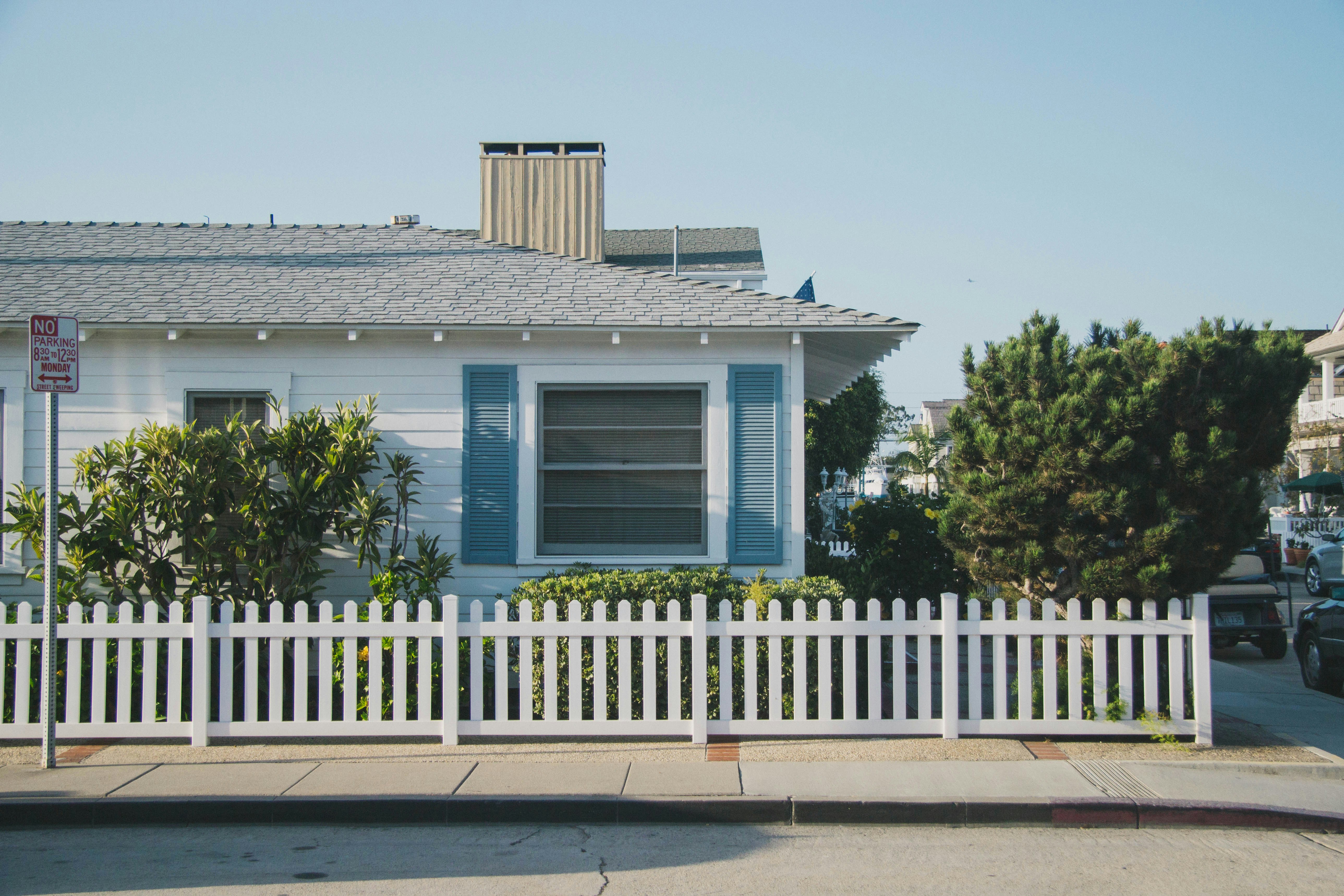
Build Smart: Common Pitfalls in Custom Home Projects
Building a custom home is an exciting journey, but it comes with its challenges. Many homebuyers face complications like inadequate planning, budget overruns, and miscommunication with builders. This article highlights the top pitfalls to avoid when building your custom home. Readers will learn how to effectively plan their project, communicate clearly, and choose the right builder. Addressing these issues can save time, reduce stress, and ensure a successful home-building experience. Don't let common mistakes hinder your dream—stay informed and make confident choices throughout the process.
Key Takeaways
A detailed blueprint is essential for guiding the custom home building process
Establishing a realistic timeline helps prevent delays and manage expectations effectively
Anticipating challenges during construction ensures a smoother and more successful building experience
Clear communication with builders and team members minimizes misunderstandings and supports project progress
Planning for future storage needs helps maintain organization and functionality in a custom home
Inadequate Planning Disrupts Your Custom Home Project

Planning is essential for a successful custom home project. Understanding the importance of a detailed blueprint helps ensure every space, including bedrooms, meets expectations. Establishing a realistic timeline can prevent delays while anticipating potential challenges during construction aids in smoother processes. Lastly, setting clear priorities with your custom home builder helps maintain focus, ensuring critical elements like warranties and home inspections are effectively addressed.
Understanding the Importance of a Detailed Blueprint
A detailed blueprint plays a crucial role in the success of a custom home project. It serves as a clear guide for builders, detailing where to place the septic tank, the structure of the roof, and even the layout of crucial areas like the shower for optimal accessibility. Without this comprehensive plan, homeowners may face common pitfalls that can tarnish their builder's reputation and lead to costly errors.
Establishing a Realistic Timeline to Avoid Delays
Establishing a realistic timeline is essential to keep the custom home project on track and reduce unnecessary pressure. Homeowners should consider potential delays related to cabinetry installation, water supply connections, and drainage system setup, as these elements are critical for ensuring a smooth build. A well-thought-out schedule allows for flexibility and helps address any unexpected challenges, such as issues in the basement that could arise during construction:
Assess all key components like cabinetry and plumbing needs early on.
Account for potential weather delays that may affect construction.
Regularly review the timeline with your custom builder to adapt as needed.
Anticipating Potential Challenges During Construction
Anticipating potential challenges during construction is vital for any custom home project. Issues such as pest control related to wood and masonry materials can arise, leading to significant setbacks if not addressed early. Homebuyers should engage with their builders to outline strategies for tackling these challenges, ensuring a smoother building experience and ultimately a home that meets their expectations.
Setting Clear Priorities for Your Custom Home
Setting clear priorities when building a custom home is essential to managing resources effectively and ensuring that expectations are met. Homeowners should conduct thorough research, particularly on the incremental costs of materials like lumber, which can fluctuate. Accepting that flood management solutions may become a priority during planning will help align the project's objectives with income limitations and practical considerations:
Ignoring the Budget Can Lead to Financial Strain

Estimating costs for all aspects of custom home building is crucial for maintaining financial stability. Homeowners should account for unexpected expenses, such as soil testing or additional work needed for green building features. Exploring diverse financing options and creating a contingency fund can provide flexibility. Addressing these areas will help avoid financial strain while ensuring every detail meets expectations, including something as simple as a closet layout.
Estimating Costs for All Aspects of Home Building
Estimating costs for all aspects of home building is vital to prevent financial strain during the custom home process. Homebuyers should consider factors such as the climate's impact on construction materials, the foundation's requirements, and the choice of flooring and carpet. By collaborating closely with a general contractor and maintaining a detailed budget that includes unexpected expenses, homeowners can effectively manage their project while ensuring quality and longevity.
Accounting for Unexpected Expenses During Construction
When building a custom home, accounting for unexpected expenses is vital to avoid financial strain. Homeowners should prepare for potential costs related to interior design, such as changes in bathroom layouts or upgrades that influence overall aesthetics. Working closely with reliable home builders and subcontractors, including electricians, can help identify potential pitfalls early, ensuring that the budget accommodates necessary adjustments:
Exploring Financing Options for Your Build
Exploring financing options for building a custom home is crucial for ensuring budget stability and avoiding financial strain. Homeowners should consider loans designed specifically for aging in place or those that cover the costs of essential utilities like heating and cooling systems. Collaborating with knowledgeable custom home builders can also help uncover financing solutions that allow for upgrades, such as mold-resistant materials and ceiling enhancements, that enhance comfort and longevity in the home.
Creating a Contingency Fund for Financial Flexibility
Creating a contingency fund is a smart strategy for homebuyers aiming to navigate unexpected expenses during the custom home-building process. This fund should account for potential costs related to the property, such as landscaping enhancements or additions like a porch and pantry that homeowners may decide to include later. By setting aside extra funds, buyers can manage unforeseen issues without compromising the quality and design of their new home, ultimately ensuring the project stays on track and within budget.
Irregular Communication Creates Confusion and Delays

Establishing regular check-ins with the builder is essential for a smooth custom home project. Utilizing technology can facilitate effective project updates, while clarifying roles and responsibilities among team members improves coordination. Encouraging open lines of communication helps address concerns, such as building codes or specific room designs like a laundry room, ensuring that every detail contributes to the beauty and functionality of the home.
Establishing Regular Check-Ins With Your Builder
Establishing regular check-ins with the builder is essential for preventing confusion and delays during the custom home building process. Frequent communication helps address issues related to zoning regulations and ensures that inspections, such as concrete quality assessments, are completed on schedule. By discussing noise management strategies early on, homeowners can create a more comfortable living environment and avoid misunderstandings that may arise later in the project.
Utilizing Technology for Effective Project Updates
Utilizing technology for effective project updates significantly enhances communication during the home construction process. Home builders can use apps to share real-time updates on the floor plan changes or selection choices, such as countertop materials, ensuring that homeowners are informed at every stage. This proactive approach helps align expectations for the living space and reduces the chances of misunderstandings that can lead to costly delays.
Clarifying Roles and Responsibilities Among Team Members
Clarifying roles and responsibilities among team members is critical for a successful custom home project. When everyone understands their specific duties, it minimizes confusion and streamlines the construction process. For instance, the expert overseeing tile installation should be aware of their contract details while coordinating with the general contractor to ensure that wall placements align with the overall design plan, including electrical and plumbing requirements that may also depend on mortgage approvals.
Encouraging Open Lines of Communication
Encouraging open lines of communication is vital during the custom home building process. Regular discussions with builders and associated team members help manage expectations regarding property tax implications, renovation plans, and overall project price. Engaging a lawyer for guidance on legal aspects can further clarify roles and responsibilities, ensuring a smoother pathway to completing the home as envisioned.
Overlooking Future Needs Can Result in Regrets

Planning for family growth and lifestyle changes is essential when building a custom home. Homebuyers should also consider potential accessibility requirements to accommodate all household members. Furthermore, assessing long-term maintenance and upkeep needs ensures that the home remains functional and enjoyable for years to come. Each aspect helps create a space that adapts to evolving needs without regrets.
Planning for Family Growth and Lifestyle Changes
Planning for family growth and lifestyle changes is essential when building a custom home. Homebuyers should envision their future needs, such as additional bedrooms or flexible spaces that can adapt as their family evolves. By considering these factors early in the design process, homeowners can prevent regrets later on and ensure their new space meets their needs for years to come:
Anticipate family size changes, whether through children or other living arrangements.
Design flexible rooms that can serve multiple purposes.
Incorporate accessibility features for aging in place.
Think about outdoor space for recreation and family gatherings.
Considering Potential Accessibility Requirements
Considering potential accessibility requirements during the design of a custom home is vital for long-term satisfaction. Homeowners should think about features such as wider doorways, zero-step entries, and convenient bathroom layouts that can accommodate everyone, including those with mobility issues. Planning for these aspects now can prevent regrets later, ensuring the home remains functional for all family members as their needs change:
Wider doorways to allow wheelchair access.
Zero-step entries for easy navigation.
Accessible bathroom layouts for convenience.
Room designs that can adapt over time.
Thoughtful kitchen layouts that enhance usability.
Assessing Long-Term Maintenance and Upkeep Needs
Assessing long-term maintenance and upkeep needs is vital for homeowners planning a custom build. Choosing durable flooring, roofing, and siding materials can greatly reduce the frequency of repairs and replacements down the line. Engaging with builders during the design phase to discuss low-maintenance options allows homebuyers to create a functional and appealing space, ultimately saving time and money in the future.
Choosing the Wrong Builder Impacts Quality and Trust

Choosing the right builder is crucial for the success of a custom home project. Researching credentials and evaluating previous work helps ensure quality. Conducting interviews allows homeowners to assess compatibility with potential builders. Finally, reading reviews and gathering client testimonials offers insights into the builder's reputation. These steps play a significant role in establishing trust and making informed decisions.
Researching Credentials and Previous Work
When building a custom home, researching a builder's credentials and previous work is vital. Homebuyers should examine qualifications, licenses, and insurance to ensure legitimacy and expertise. Additionally, reviewing past projects allows homeowners to gauge the builder's style, quality of workmanship, and reliability, ultimately fostering trust and confidence in their choice. By taking these steps, homeowners can avoid the pitfall of selecting a builder who may not meet their expectations or project goals.
Conducting Interviews and Evaluating Compatibility
Conducting interviews with potential builders is an essential step in ensuring the right fit for a custom home project. Homebuyers should prepare specific questions that address their expectations, communication styles, and previous experience with similar projects. This process fosters trust and helps identify builders who align with the homeowner’s vision, ultimately leading to a more successful construction experience:
Reading Reviews and Gathering Client Testimonials
Reading reviews and gathering client testimonials is a critical step in the custom home building process. Homebuyers should look for insights from previous clients to understand a builder's reliability and quality of work. Positive feedback from satisfied homeowners can indicate that the builder follows through on promises, while negative reviews can highlight potential issues to consider. This research helps make an informed choice and builds trust in the builder's capabilities, ultimately leading to a smoother construction experience.
Neglecting Energy Efficiency Increases Long-Term Costs

Integrating sustainable materials into the design of a custom home lays a foundation for long-term efficiency. Investing in energy-efficient appliances and systems enhances performance while reducing bills. Considering insulation and window placement will optimize energy usage, making the home comfortable year-round. Additionally, planning for renewable energy sources can further minimize costs and environmental impact. Each of these strategies contributes significantly to the overall value and effectiveness of a custom build.
Integrating Sustainable Materials Into Your Design
Integrating sustainable materials into the design of a custom home can significantly enhance energy efficiency and reduce long-term costs. Homeowners should consider options like bamboo flooring, recycled steel roofing, and low-VOC paints, which not only support eco-friendly practices but also improve indoor air quality. By choosing these materials, homeowners can enjoy a beautiful living space that aligns with their values while minimizing utility expenses and maintenance needs.
Investing in Energy-Efficient Appliances and Systems
Investing in energy-efficient appliances and systems is a smart move for homeowners looking to save on long-term costs while enhancing comfort. By selecting Energy Star-rated appliances, such as refrigerators, washers, and heaters, owners can reduce energy consumption significantly, resulting in lower utility bills and a smaller carbon footprint. Additionally, incorporating systems like programmable thermostats allows homeowners to better manage energy usage, ensuring indoor spaces remain at a comfortable temperature when needed, further maximizing efficiency:
Choose Energy Star-rated appliances to minimize energy use.
Implement programmable thermostats for smart temperature management.
Consider high-efficiency heating and cooling systems for better performance.
Considering Insulation and Window Placement for Efficiency
Considering insulation and window placement is essential for improving energy efficiency in a custom home. Proper insulation minimizes heat loss during winter and prevents overheating in summer, reducing energy bills. Additionally, placing windows strategically can maximize natural light while minimizing the need for artificial lighting and heating or cooling, thus creating a comfortable living environment with long-term savings.
Planning for Renewable Energy Sources
Planning for renewable energy sources is a key step in enhancing the efficiency and sustainability of a custom home. Homebuyers should consider integrating solar panels or wind turbines as part of their energy solutions, which can significantly lower utility costs over time. By consulting with energy experts during the design phase, homeowners can evaluate the best options for their specific location and needs, ensuring their home remains cost-effective and environmentally friendly.
Forgetting Storage Space Leads to Cluttered Living

Evaluating storage needs before finalizing designs is crucial to avoid clutter in a custom home. Incorporating built-in solutions, like shelving and cabinets, ensures maximum use of available space. Additionally, planning for future storage requirements helps homeowners adapt as their needs change. These insights provide practical strategies for maintaining an organized and functional living environment.
Evaluating Your Storage Needs Before Design
Evaluating storage needs before finalizing a custom home design is essential to avoid clutter and frustration down the line. Homeowners should consider how they utilize space, from seasonal items to everyday essentials, ensuring there's ample room for everything. For instance, incorporating well-placed cabinets, shelving, and built-in solutions can significantly enhance organization and convenience, making daily life smoother and more enjoyable.
Incorporating Built-in Solutions for Maximum Space
Incorporating built-in solutions is a vital strategy for maximizing space in a custom home and minimizing clutter. Homeowners should consider features like shelving, cabinets, and under-stair storage to effectively utilize every inch of available space. This approach not only enhances organization but also contributes to a more functional and aesthetically pleasing living environment.
Planning for Future Storage Needs
Planning for future storage needs is a critical consideration when designing a custom home. Homeowners should consider how their storage spaces will evolve over time, including extra cabinets, larger closets, or dedicated areas for seasonal items. By anticipating these requirements early in the planning phase, they can ensure their home remains organized and functional as their lifestyle changes:
Evaluate current and future storage requirements to prevent clutter.
Incorporate built-in shelving and cabinetry in key areas.
Design versatile spaces that can adapt to changing needs.
Sacrificing Functionality for Aesthetics Reduces Usability

Balancing design choices with daily living needs is essential in custom home building. Prioritizing the layout and flow of living spaces ensures comfort and usability, while selecting practical yet stylish materials enhances both function and aesthetics. These insights help homeowners create a beautiful yet functional environment that meets their everyday requirements.
Balancing Design Choices With Daily Living Needs
Balancing design choices with daily living needs is vital when building a custom home. Homeowners often prioritize aesthetics, leading to layouts that do not support efficient use of space. For instance, while an open-plan design may look appealing, it should also accommodate family activities and practical movement throughout the area.
Consider the flow of daily activities when choosing layouts.
Opt for materials that are both stylish and durable to enhance usability.
Incorporate thoughtful storage solutions to maintain an organized space.
Prioritizing Layout and Flow of Living Spaces
Prioritizing layout and flow in living spaces is essential for creating a functional custom home. Homeowners should consider how they move through their daily routines when designing spaces, ensuring that areas like kitchens, living rooms, and dining areas support family interactions and activities. By focusing on usability over mere aesthetics, individuals will create a harmonious environment that enhances both comfort and lifestyle, reducing the risk of dissatisfaction in their new home.
Choosing Practical Materials That Are Also Stylish
Choosing materials that are both practical and stylish is essential for a successful custom home build. Homeowners benefit from selecting durable flooring options, like luxury vinyl or hardwood, that not only enhance aesthetics but also withstand daily wear and tear. Opting for features such as quartz countertops adds elegance while ensuring longevity, resulting in a beautiful and functional space that meets everyday needs without compromising on style.
Neglecting Permits and Regulations Risks Project Delays

Understanding local building codes and requirements is vital for avoiding costly delays during a custom home project. Homeowners must ensure all necessary permits are acquired and work closely with local authorities throughout construction. This proactive approach not only streamlines the process but also helps maintain compliance with regulations, ultimately contributing to a smoother building experience.
Understanding Local Building Codes and Requirements
Understanding local building codes and regulations is crucial for anyone embarking on a custom home project. These codes ensure safety, quality, and compliance with community standards, and failing to adhere to them can lead to significant delays and extra costs. Homebuyers should work closely with their builders to thoroughly review these requirements before construction begins, ensuring that all necessary permits are obtained and the project proceeds smoothly without any unexpected interruptions.
Ensuring All Necessary Permits Are Acquired
Ensuring all necessary permits are acquired is a critical step in the custom home building process. Homeowners often overlook this aspect, leading to frustrating delays and extra costs if the project doesn't comply with local regulations. By working closely with the builder and local authorities, homeowners can identify required permits and ensure they are obtained before construction begins, safeguarding against potential setbacks and promoting a smoother building experience.
Working Closely With Local Authorities During Construction
Working closely with local authorities during the construction phase of a custom home project is necessary to avoid delays and complications. Homebuyers should engage early with building inspectors and zoning officials to familiarize themselves with necessary regulations and permit requirements. This proactive approach not only streamlines the building process but also ensures compliance with safety standards, leading to a smoother and more efficient construction experience.
Engage with building inspectors early in the project.
Understand zoning requirements to prevent misunderstandings.
Acquire all necessary permits before starting construction.
Maintain communication with local authorities throughout the build.
Conclusion
Building a custom home requires careful planning to avoid significant pitfalls. A detailed blueprint, realistic timelines, and clear communication with builders are vital for smooth execution. By anticipating challenges and understanding future needs, homeowners can create spaces that truly meet their lifestyle. Prioritizing these considerations not only enhances the home-building experience but also ensures a successful and enjoyable outcome.


